Visitation on the Berm
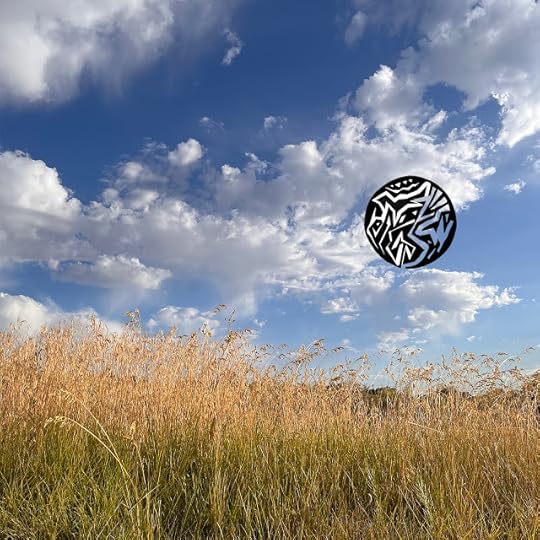
The Observer
On a sunny day, looking up
past the berm and its grasses,
I saw this circle emerge from sheer air.
Was it glaring? staring?
How quickly its white turned clear,
letting the clouds show through--
and then, in a clatter, the whole
diassembled, like a tower of blocks
tumbling into the field beyond.
And when I went to see, I found patches of sand
blackened, sage brush singed,
but no debris, no pattern branded
onto the earth, no residual flame.
Downhill in the woods,
three coyotes began to yip, as if signalling
that they too found this appearance,
this crash, annoying, a challenge
to our shared sovereignty.
Horace Graceman
Dearest EB,
It is so good to be back in touch with you. Thank you very much for supporting me in this period of silence between us. Though I still feel somewhat tongue-tied regarding the fruits of that “retreat,” I feel even more in touch---and not just with you.
Forgive me for a little pedantry, but I seem to fall back on my old discipline of etymology whenever I am trying to get to the root of things. And my focus is even more now on the name that has been given to these sightings---“visitations”---for I am being visited. What was at first startling causing me to question my own sanity has become a change of heart.
Let me begin with the word: The root of the word is vis- from the Latin past participle visus that means having been seen. Thus vision is both the faculty of seeing and the general term for things seen. The earliest use of the noun “visitation” occurred in the Middle Ages, @13th century, and referred to the visit to a monastery or community by an ecclesiastical authority, a bishop for example, who carried the authority of Rome. He would come with a message of conduct regarding prayer or practice, sometimes to guarantee the collection of tithes, or to adjudicate a legal matter beyond the powers of the Abbot. The word carries a numinous sense that signified some heavenly apparition the sight of which was visited upon a mortal.
The word “Visitation” has been applied, aptly I will say, to these strange black and white figures in our skyscapes, ones we have seen with our own eyes, you and I, and ones that have been captured and shared on social media. As you well know, there has been no scientific explanation for these phenomena, nor any consensus about their effect on those who sight them. What originally caused shock and acute anxiety, followed by intense speculation, has over the months become if not normal, then more or less normalized, (though it could be said that the world is waiting for the other shoe to drop).
What is clear to you and to me is that the very anomalous, inexplicable, and rather beautiful surprise of these “visitations” has affected the way we look at the world, at one another, and experience changes in our own inner lives. While those prone to panic and paranoia had their worst fears confirmed, even they, in the course of time, find no support for their delusions. Panic and paranoia are limit cases of the range of human experience between the known and the unknown. Clearly, we all live most of our lives in uncertainty, and though we may take many things for granted, a realist is someone who knows that these things are all given and may be taken away at any moment, temporarily or permanently. In the end, each of us must speak for ourselves: what are these Visitations meaning to each of us and how does that meaning change over time?
And this brings me to the reason I asked for some time to myself, for I needed to metabolize, so to speak, the experience of change I saw taking place in me. In the weeks of my retreat, I returned to a book I read in graduate school, William James’ “The Varieties of Religious Experience”. That book, read now, gave me a way to validate and assimilate the inexplicable and ineffable power these sightings have had on me. I refer in particular to what James calls the “noetic” power of mystical insight---a knowing the persuasive ad transformative power of which cannot be denied.
One way of telling you more particularly what I am trying to understand is to use the metaphor of the after-image. The term “after-image” describes an image that appears to the eyes after a period of exposure to the original image. They occur because photochemical activity in the retina continues even when the eyes are no longer experiencing the original stimulus. This sense of retaining an impression is not visual to me, or not that only, but something more like an echo, to change the metaphor, something that has duration and a kind of physical vibration. Further, I find at times that I not only hallucinate a Visitation---that I see it when no one else is seeing it, or seeing one when I close my eyes in meditation, or in a dream---but I seem to enter into it as if it were a maze (yet another metaphor), as if it had not only three dimensions in space, but a fourth dimension that is temporal in which the field of the figure begins to change over time with me seeing it or being within it. Yes, being within it. “Taken up” by it, so to speak.
And it is this dream-like engagement in a medium---like being able to breathe underwater---that persists into my waking state. I feel I am living in two very different and yet compatible elements, what have been called ordinary and non-ordinary reality.
During these weeks surprise has turned into welcome; the visits are precious, they can be “trippy,’ but never cause me to lose my balance. On the contrary, they steady and refresh me. Not only that, but I seem to move in a different world or move differently Again I can only speak in metaphor: it’s as if the urban world was less crowded, as if everything moves in a slightly slower motion, as if there was more time in time. What’s the rush? Where’s the rush? Perhaps this is a function of some neurological change that is part of aging, but I find increasingly I meet people, at a café, in line at the grocery store, who are smiling. Not the smile of a drunk, but something softer, more open, that is not smiling at but just smiling as. Smiling as a way of being. Think of the slight smile on the faces of the Buddhas you have seen. That enigmatic, private and yet an affecting, affectionate smile. The visitations have grown a sense of peace in me that carries a quality of benevolence and compassion, of being “in touch” with the presence of living.
I have become a smiling man.
Thank you for letting me think aloud. I so look forward to being with you on Sunday.
Horace
Elizabeth Buchman
O Horace, I love what you have written. So happy for you. While you have been “away,” I have gotten a puppy. A different route to the same place, I think. YES, to Sunday. Spring is here. O my! Your fellow traveller : EB
Jean Prix
Eye-Tracking Analysis
As an image, this photo invites the eye to look up, past the grasses, to the circle, and beyond that, to the summer day. When we track eye movements, we note that the mind retraces that movement--from foreground to middle distance to the far off and back--rapidly and repeatedly.
When we interview our test subjects, we learn that they easily recognize the scene, understand intuitively that the grass is near us, and behind it is some kind of green hill, and above that, clouds. These patterns are familiar; people are accustomed to "reading" an image in this way.
And when we let people linger on the picture, we learn that they absorb--without verbalizing-- other clues to the situation: the grasses, for example, are going beige and dry at the top, though still green below--viewers do not analyze this as much as absorb the likelihood that they are looking at a moment in late summer. The clouds blowing overhead, a few distintegrating, hint at a warm breeze we might feel, if standing there.
But the disk intrudes. It attracts attention--It seems out of place. It looks different from the rest of the picture. It is not a natural form. It is neither animal, vegetable, nor mineral. But it looks as if it has been shaped by some consciousness, whether human or alien. And our test subjects attributed some kind of intention to the thing--malevolent, gracious, intrusive, but conscious. In the right side of the brain, activity rose as soon as the eye returned to explore this mysterious disk.
When we interviewed people, asking what they thought about this thing, they talked in terms of a presence. Not human: perhaps a divinity or spirit, perhaps merely an alien coming from space.
In discussion, our group singled out characteristics that distinguish this "visitor," as several called it, from the surrounding landscape. It seems one dimensional, or at least, very thin. It has holes in it. We can see through it. To judge from the report of by the photographer, the nearby coyotes found its appearance eerie, offputting, disturbing in some way.
When asked what the disk might mean, discussions became heated. Each participant spoke of having some strong emotional reaction, and a desire to know what, or who, this might be. No one theory won general agreement. Is it a hoax? Is it a UFO? Does it carry a message? Or is it just there, a presence somehow evading our mind's efforts to pin down what it might signify, or say? These are the questions we discuss in the final section of our article.
--Jean Prix, Abstract of the paper, “Exploring one of the Visitation Images Through Eye Tracking,” in Papers in Experimental Psychology, November 1, 2023, pp 456-473.
--Jonathan Reeve Price and Peter Asher Pitzele
To explore the sequence of Visitations:
Visitation on a Clear Day
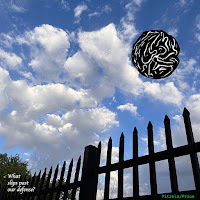
Visitation in the Smoke
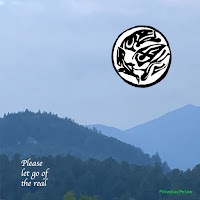
Visitation in the Haze
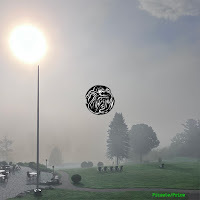
Visitation Arriving at Dawn
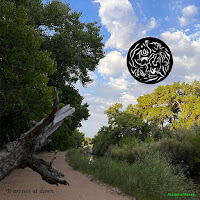
Visitation on the Rio Grande
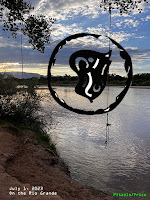
Visitation on a Maine Summer Day
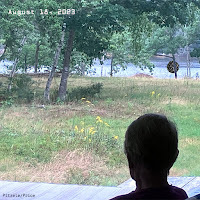
Visitation in Brooklyn
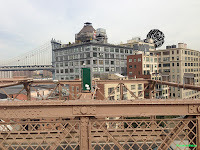
Visitation in Midtown
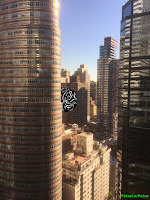
Visitation at Night
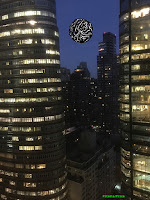
Visitation--Skyscraper with Pigeon
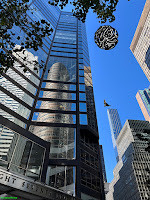
Visitation--Blocking Traffic
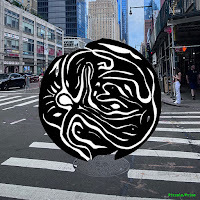
Visitation at Hudson Yards
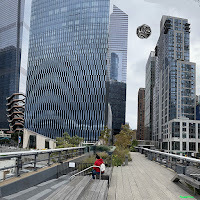
Visitation on the High Line
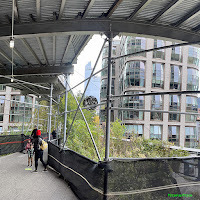
Visitation Under Brooklyn Bridge
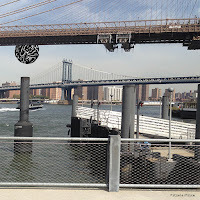
Visitation Across the Hudson
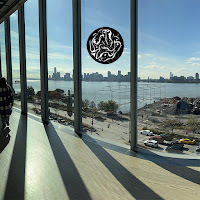
Visitation in Central Park
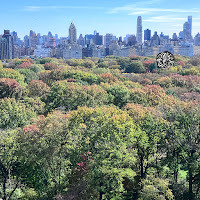
Visitation at Rush Hour
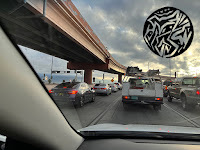
About Jonathan
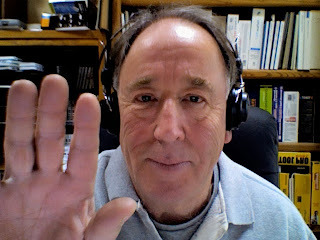
LinkTree: https://linktr.ee/jonathanreeveprice
MuseumZero site: www.museumzero.art
Twitter: http://twitter.com/JonathanRPrice
Instagram:
Pinterest:
Facebook:
Linked In:
Amazon Author Page:
Goodreads:
https://www.goodreads.com/author/show/41600924.Jonathan_Price
About Peter
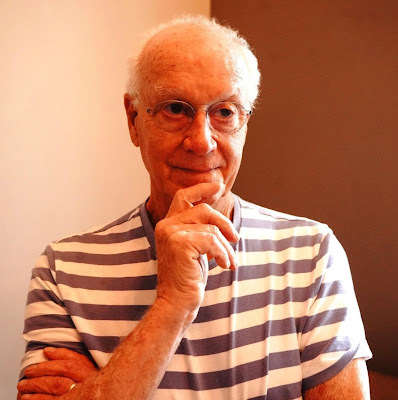
Instagram: https://www.instagram.com/peter.pitzele/
Scripture Windows: Toward a Practice of Bibliodrama, with Susan Pitzele
Our Fathers' Wells: A Personal Encounter With the Myths of Genesis



